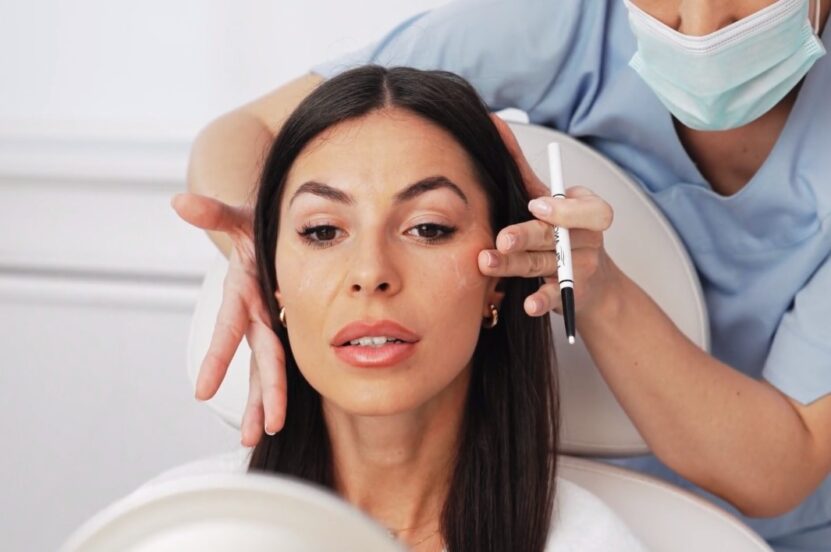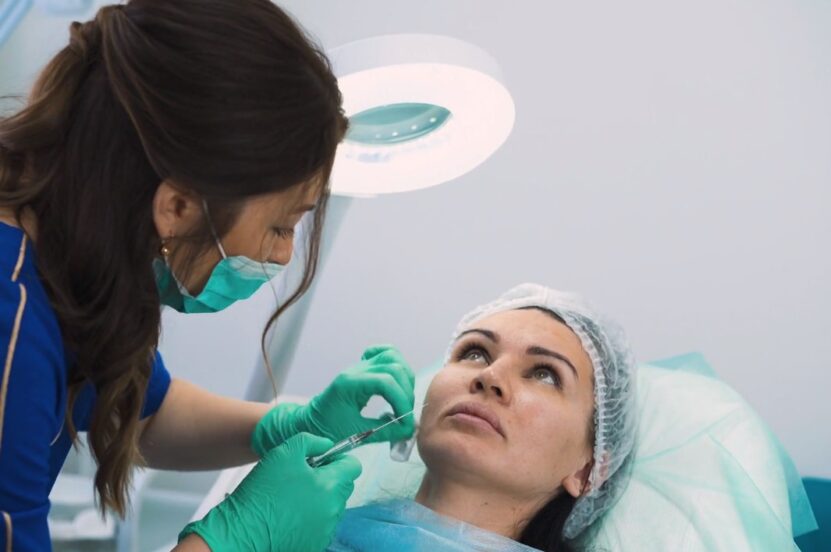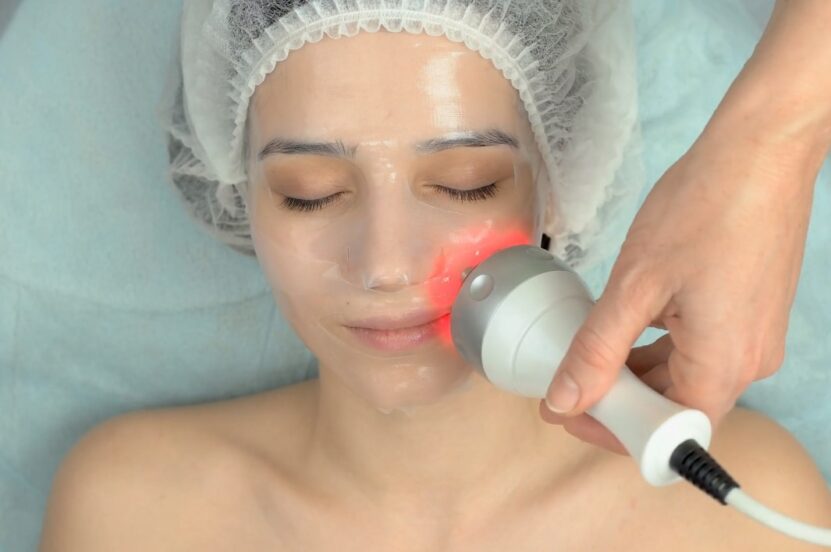When it comes to beauty and anti-aging treatments, we’re bombarded with a myriad of options and buzzwords. Two such terms are often thrown around interchangeably are “facial rejuvenation” and “facelift.” If you’re wondering whether these are the same thing or not, you’re not alone. This blog post will clarify the differences, similarities, and everything in between to empower you with the knowledge you need to make informed decisions about your skin. So, buckle up as we delve deep into the world of facial aesthetics.
The Basics of Facial Rejuvenation and Face Lift

Facial Rejuvenation – A Broad Umbrella Term
Facial rejuvenation is an all-encompassing term that refers to a variety of aesthetic procedures and treatments aimed at restoring a youthful appearance to the face. These techniques can target various signs of aging, such as wrinkles, sagging skin, sun damage, and age spots. Facial rejuvenation options range from non-invasive treatments like chemical peels, dermal fillers, and laser resurfacing to more invasive surgical procedures like facelifts and neck lifts.
Face Lift – A Specific Surgical Procedure
In contrast, a facelift (also known as rhytidectomy) is a specific surgical procedure that aims to improve visible signs of aging on the face and neck. The surgery involves removing excess skin, tightening underlying tissues, and re-draping the skin to create a smoother, more youthful appearance. A facelift primarily addresses sagging skin, deep lines, and wrinkles that cannot be treated through non-invasive methods.
Delving Deeper into Facial Rejuvenation

As mentioned earlier, facial rejuvenation is a broad term that encompasses various techniques. Let’s take a closer look at some of the most popular non-invasive facial rejuvenation treatments.
Chemical Peels
Chemical peels are used to improve the skin’s appearance by applying a chemical solution that causes the outer layers of the skin to peel off. This treatment helps reduce fine lines, wrinkles, age spots, and uneven pigmentation. Depending on the strength of the peel, downtime can vary from minimal to several weeks.
Microdermabrasion
Microdermabrasion is a non-invasive exfoliating treatment that uses tiny crystals to gently remove the outermost layer of dead skin cells. This process stimulates collagen production, resulting in smoother, more radiant skin. It is commonly used to address fine lines, acne scars, and sun damage.
Dermal Fillers

Dermal fillers are gel-like substances injected under the skin to smooth out wrinkles, restore lost volume, and plump up the face. Common fillers include hyaluronic acid, calcium hydroxylapatite, and poly-L-lactic acid. Results are temporary and typically last anywhere from six months to two years, depending on the filler used.
Botox and Dysport
Botox and Dysport are injectable treatments that temporarily relax the facial muscles, reducing the appearance of dynamic wrinkles caused by muscle movement. These treatments are commonly used to address crow’s feet, forehead lines, and frown lines between the eyebrows.
Laser Resurfacing
Laser resurfacing involves the use of a laser to remove the top layers of skin, stimulating the production of collagen and new skin cells. This treatment can help address wrinkles, acne scars, and uneven pigmentation. Recovery time depends on the type of laser used and the depth of the treatment.
The Nitty-Gritty of Face Lifts

While facial rejuvenation encompasses various treatments, a facelift is a surgical procedure that specifically addresses sagging skin, deep lines, and wrinkles. Let’s explore the different types of facelifts and what they entail.
Traditional Face Lift
A traditional face lift involves an incision that starts at the hairline, continues around the ear, and ends at the lower scalp. The surgeon will then lift and reposition the underlying muscle and connective tissue, remove excess skin, and re-drape the skin smoothly over the new contours. This procedure provides the most dramatic and long-lasting results but also has the longest recovery time, typically 2-4 weeks.
Mini Face Lift
A mini face lift is a less invasive alternative to the traditional face lift, targeting the lower face and neck areas. It involves smaller incisions around the ears, allowing the surgeon to tighten the skin and underlying tissues with less scarring and downtime. Recovery time for a mini face lift is generally shorter, at around 1-2 weeks.

Mid Face Lift
A mid-facelift specifically addresses the cheek and mid-face area. The procedure involves small incisions within the hairline and inside the mouth, enabling the surgeon to reposition the fat pads in the cheeks and restore a more youthful contour. The recovery period for a mid-face lift is usually around 1-2 weeks.
Neck Lift
A neck lift, often performed in conjunction with a facelift, targets sagging skin and muscle bands in the neck area. Incisions are made around the ears and under the chin, allowing the surgeon to tighten the platysma muscle and remove excess skin. Recovery time for a neck lift is similar to that of a traditional face lift, at around 2-4 weeks.
Read our article about Long Chin Surgery, also.
Choosing the Right Procedure for You

Deciding between facial rejuvenation treatments and a facelift comes down to your unique needs, goals, and preferences. Here are some factors to consider when making your decision:
1. Severity of Aging Signs
If you’re dealing with mild to moderate signs of aging, non-invasive facial rejuvenation treatments like chemical peels, dermal fillers, and laser resurfacing may be sufficient to achieve the desired results. However, if you have more severe sagging, deep lines, and wrinkles, a surgical face lift may be the most effective solution.
2. Downtime and Recovery
Non-invasive facial rejuvenation treatments generally have minimal to no downtime, allowing you to return to your daily activities quickly. On the other hand, surgical face lifts require a longer recovery period, during which you’ll need to take time off from work and social engagements.

3. Longevity of Results
While non-invasive treatments can produce noticeable improvements, their results are typically temporary, requiring ongoing maintenance. In contrast, the results of a face lift are more dramatic and long-lasting, often persisting for 10-15 years.
4. Budget
Non-invasive treatments tend to be less expensive upfront but may require regular touch-ups. A face lift is a more significant investment but provides long-lasting results, potentially making it more cost-effective in the long run.
Consultation and Choosing the Right Provider

An essential step in the decision-making process is scheduling a consultation with a board-certified plastic surgeon or dermatologist. During this appointment, the provider will assess your skin, discuss your concerns, and help you determine the most appropriate treatment plan to meet your needs. Here are some tips for choosing the right provider and getting the most out of your consultation:
1. Research and Referrals
Start by asking for recommendations from friends, family, or your primary care physician. You can also research providers online, paying close attention to their credentials, patient reviews, and before-and-after photos.
2. Board Certification
Ensure that the provider you choose is board-certified by the American Board of Plastic Surgery or the American Board of Dermatology. This certification guarantees that the provider has undergone rigorous training and testing, ensuring they adhere to the highest standards of care.
3. Experience and Expertise
Choose a provider who has extensive experience in the specific procedure you’re considering. Don’t be afraid to ask about their success rate, how many procedures they’ve performed, and any potential complications they’ve encountered.
4. Communication and Comfort
During the consultation, pay attention to how well the provider communicates and whether you feel comfortable discussing your concerns with them. It’s crucial to choose a provider who listens to your needs, answers your questions thoroughly, and makes you feel at ease throughout the process.
5. Customized Treatment Plan
A skilled provider will develop a tailored treatment plan to address your unique concerns and goals, rather than using a one-size-fits-all approach. This plan may include a combination of non-invasive facial rejuvenation treatments, a facelift, or other surgical procedures, depending on your needs.
Final Words
Facial rejuvenation and facelifts are not the same things, though they both aim to restore a youthful appearance to the face. Facial rejuvenation is a broad term that encompasses various non-invasive treatments, while a facelift is a specific surgical procedure targeting sagging skin, deep lines, and wrinkles.
When deciding between these options, consider factors such as the severity of your aging signs, your desired recovery time, and your budget. Ultimately, consulting with a board-certified plastic surgeon or dermatologist will help you determine the best course of action to achieve your aesthetic goals.

